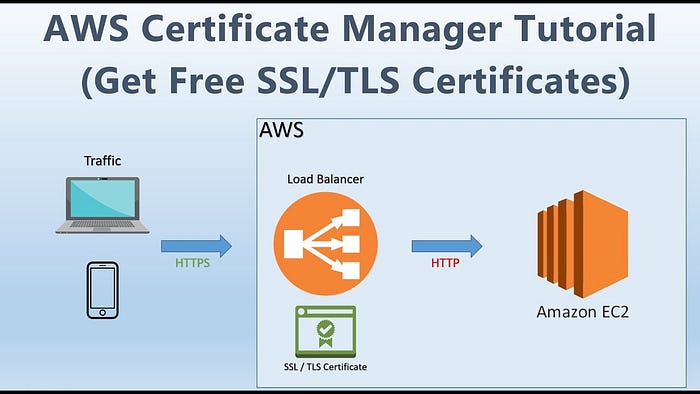In today’s digital landscape, securing your applications is more critical than ever. One of the most effective ways to safeguard data in transit is through SSL/TLS encryption. This article will guide you through the process of implementing SSL/TLS encryption for your AWS applications to ensure that your data remains protected.

Understanding SSL/TLS Encryption
SSL (Secure Sockets Layer) and TLS (Transport Layer Security) are cryptographic protocols designed to provide secure communication over a network. While SSL is the older protocol, TLS is its successor and is more secure. Both protocols work by encrypting the data transmitted between a client and a server, preventing unauthorized access and tampering.
For a visual walkthrough of the concepts covered in this article, check out my YouTube playlist:
Benefits of SSL/TLS Encryption
- Data Protection: Encrypts data to protect it from interception and unauthorized access.
- Trust and Credibility: Users are more likely to trust and engage with a website or application that uses SSL/TLS, as indicated by the padlock symbol in the browser’s address bar.
- Compliance: Many regulatory standards and industry best practices require the use of encryption to protect sensitive data.
Implementing SSL/TLS on AWS
1. Obtain an SSL/TLS Certificate
The first step in securing your AWS applications is to obtain an SSL/TLS certificate. You can either use AWS Certificate Manager (ACM) to get a certificate or purchase one from a third-party certificate authority (CA). ACM provides a convenient and cost-effective way to manage SSL/TLS certificates within the AWS ecosystem.
2. Attach the Certificate to Your Load Balancer
Once you have your SSL/TLS certificate, the next step is to attach it to your AWS Elastic Load Balancer (ELB). This will ensure that all traffic between your users and the load balancer is encrypted. Follow these steps:
- Navigate to the AWS Management Console.
- Open the EC2 Dashboard and select “Load Balancers.”
- Choose your load balancer and go to the “Listeners” tab.
- Edit the HTTPS listener and select “Change” to attach your SSL/TLS certificate.
3. Configure SSL/TLS Termination
SSL/TLS termination involves decrypting traffic at the load balancer level before forwarding it to your backend servers. This allows your backend servers to receive unencrypted traffic, reducing the processing load on them. In the load balancer settings, configure SSL/TLS termination to handle encryption and decryption tasks.
4. Enforce HTTPS
To ensure that all traffic to your application is encrypted, configure your application to enforce HTTPS. You can do this by redirecting HTTP requests to HTTPS within your application settings or using a web server configuration file.
5. Regularly Update and Monitor Your Certificates
SSL/TLS certificates have expiration dates, so it’s essential to monitor their validity and renew them before they expire. AWS Certificate Manager makes it easy to track and renew certificates automatically.
Conclusion
Implementing SSL/TLS encryption for your AWS applications is a fundamental step in securing your data and building trust with your users. By following these guidelines, you can ensure that your applications are protected against potential threats and meet compliance requirements. As security threats continue to evolve, staying vigilant and proactive about encryption will help you maintain a secure environment for your users.
Connect with Me:
- YouTube ► S3 CloudHub Channel
- Facebook ► S3 CloudHub Page
- Medium ► S3 CloudHub Blog
- Demo Reference ► GitHub Repository
- Blog ► S3 CloudHub Blogspot
- Dev ► S3 CloudHub on Dev.to

No comments:
Post a Comment